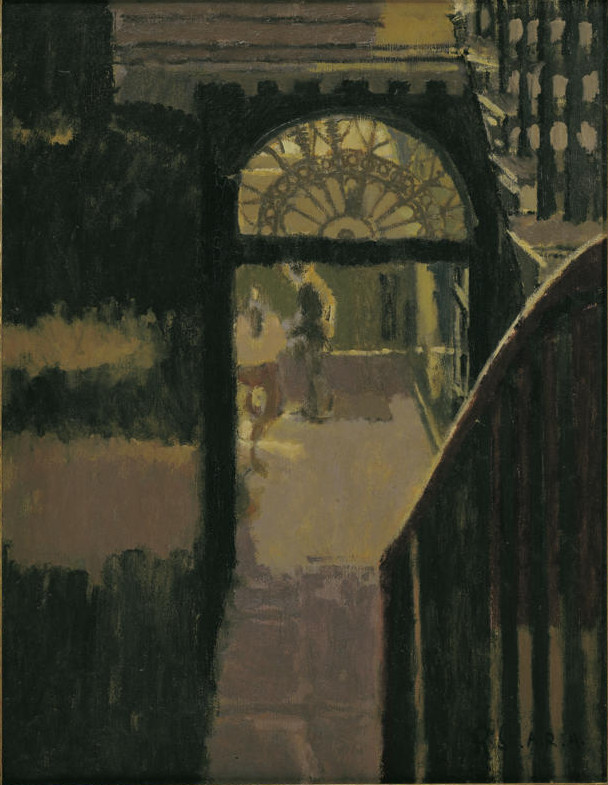We acknowledge the Traditional Owners of the land on which the Queensland Art Gallery | Gallery of Modern Art stands and recognise the creative contribution First Australians make to the art and culture of this country.

Walter Richard Sickert / England 1860–1942 / Whistler’s studio c.1915–17 / Oil on canvas / 91 x 71.5cm; 112 x 91cm (framed) / Gift of Lady Murdoch in memory of Sir Keith Murdoch, KT, 1953 / Collection: Queensland Art Gallery | Gallery of Modern Art
Walter Richard SickertWhistler’s studio c.1915–1917
Not Currently on Display
Both Walter Richard Sickert and James McNeill Whistler are associated with British art history and the city of London, although neither artist was born there. The setting for Whistler’s studio is a basement room which Whistler used as his studio in London where the artist had settled in 1859.
One of the acknowledged leaders of late nineteenth-century British Modernism, Whistler was Walter Sickert’s mentor and friend during the early years of Sickert’s artistic career. Sickert attended Whistler’s studio daily to watch and assist him at work, often sketching and painting Whistler’s subjects.
Sickert’s palette, too, was influenced by Whistler, in his choice of subdued, muted colours restricted to a few tones, such as those used here. Whistler’s studio was painted some 18 years after the artists’ falling out and some 12 years after Whistler’s death.
Walter Richard Sickert was born in Munich, Germany, in 1860, and arrived in England in 1868. A painter and etcher of portraits, figures and townscapes, Sickert studied art for a short time at the Slade School of Art, London, in 1881 under James McNeill Whistler, his mentor.
He travelled to Paris in 1883, where he was influenced by Edgar Degas. In 1885, he travelled to Dieppe, France, choosing to live there for several years (1899–1905), and between 1900 and 1904, he frequently worked in Venice.
A member of the New English Art Club, he settled in London after leaving Dieppe and established the Camden Town Group of artists in 1911. The Camden Town Group included Lucien Pissarro, Harold Gilman, Augustus John and Henry Lamb.
This group, frequently called the English Post-Impressionists, had different styles, but shared a commitment to an objective examination of everyday life.
Discussion Questions
1. Artist studios are places of wonder and intrigue. Why do you think this may be?
2. How does the artwork reflect the artist’s perspective on the environment?
Classroom Activities
1. What would you expect to see in an artist’s studio? Imagine the scene that would be revealed if you were to walk through the archway in Sickert’s painting. Using a limited palette of muted tones, draw what you think you might see.
2. Use a camera to capture an interesting composition based on a view from your classroom. Create a painting or reduction lino print based on this view.